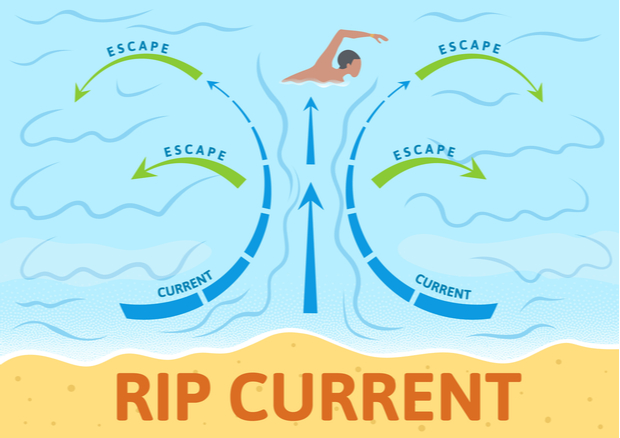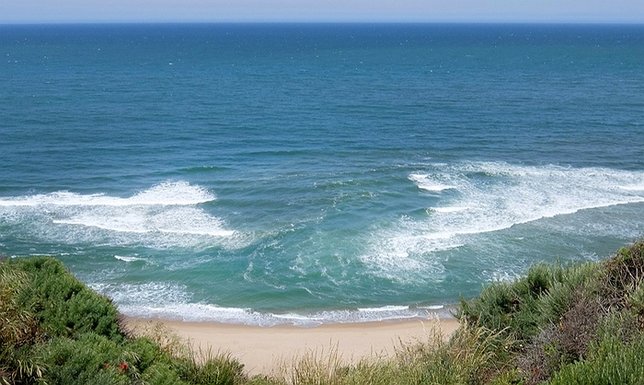Long Islanders are still flocking to the beaches, especially during the dog days of summer. It’s one of the great benefits of living on Long Island but the danger of the ocean can never be underestimated.
After a teen drowned in Long Beach and five others had to be rescued, the U.S. Coast Guard issued a warning about rip currents and how a bather can recognize them, and what to do if you are caught in one.

How to escape from a rip current. Photo: Shutterstock.
“Tragic deaths are always reminders of how dangerous #RipCurrents can really be,” the Coast Guard Sector Long Island Sound wrote on its Facebook page. The post went on to explain rip currents.
Rip currents are tunneled currents of water flowing away from the shore. They are always present in some form, but increase in speed and strength as the waves get bigger and stronger. If your out swimming at the beach and find yourself caught in a rip current #NEVER try and fight current, you will become exhausted, lose your energy and be at serious risk of losing your life. Instead swim with and out of the current and then back to shore, if possible. If you can’t swim out of the current, float or tread water while waving and yelling for #help.
The National Oceanic and Atmospheric Administration (NOAA) says that although the terms are often used interchangeable, rip tides are different than rip currents in that a “rip tide is a specific type of current associated with the swift movement of tidal water through inlets and the mouths of estuaries, embayments, and harbors.” Rip currents are powerful, narrow channels of fast-moving water that travel up to eight feet per second, faster than an Olympic swimmer.
You can also watch a webinar on rip currents by NOAA here.
Scientists from the UNC Coastal Studies Institute and Kill Devil HIlls Ocean Rescue used fluorescein dye to track rip currents within the surf zone and showed in a video how they work.











